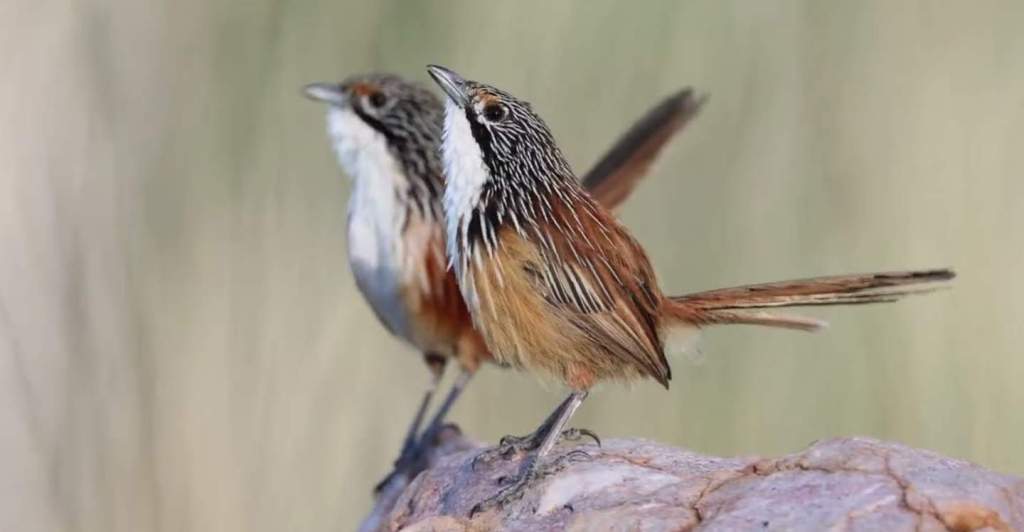Carpentarian Grasswren (Amytornis dorotheae) is named for its confinement to the sandstones of the Carpentarian system at the head of the Gulf of Carpentaria. This grasswren remains one of Australia’s least known birds. The species lives in screes, boulder plateaus, and ravines filled with spinifex tussocks, such as Triodia and Plectrachne, and few trees. Carpentarian grasswren belongs to the family Maluridae.
In the morning, they hop and run across the rocks on their rapid feeding forays through their territory. Most of the time, an adult pair and their young are grouped in pairs or small, loose groups of three to five birds. Both insects (beetles) and seeds are probed into crevices, under overhangs, and around the edges of overarching spinifex. It is evident from the way they are nervously alert, twitching constantly here and there with their tails well-cocked.
If they detect any hint of danger, they dash headlong into cover-a clump of spinifex or a hole under a rock-sometimes part-fluttering and crane inquisitively back at the source of danger. During feeding, the male chirps constantly in contact with the female. Incubation and brooding are performed by females alone, but young remain with their parents for months after fledging.

Dorothy Grasswren and Red-winged Grasswren are also names for this bird. Previously, the species was believed to be conspecific with white-throated grasswrens. This is a monotypic species. Grasswrens measure 160-180 mm in length; however, males are slightly longer.
The male bird has a black forehead and face with thin white streaks, brow chestnut; black line extends from base of bill down sides of neck; crown to upper back chestnut with white streaks, grading to plain chestnut on lower back and rump. Wings dusky brown, flight feathers and coverts edged pale chestnut. Tail slender, dusky, feathers fringed rufous. Throat, breast and upper belly white, grading into pale tawny lower belly and undertail. Eye brown. Bill dark grey with a pale base. Feet are grey.
The female bird is like the male; flanks and lower belly deep chestnut, separated from white breast by an incomplete band of lanceolace white feathers broadly edged black. The immature bird is like adults; upper surface duller with less distinct streaks; belly paler tawny in both sexes and lacking breast band in females; bill paler.
Both sexes of the Carpentarian Grasswren make soft ticking or chirping signals during contact; buzzing with alarm. Nevertheless, the song consists of long sweet trillled phrases like those of White-throated Grasswren.
Nesting and breeding occur between October and February-March. A rather bulky oval dome with a side entrance towards the top, made from closely interwoven dry spinifex stems with some leaves at the base; it is lined with finer grass stems and is built into a clump of spinifex 200-400 mm high. It lays two or three rounded-oval, pale pink eggs, that are sparingly speckled and blotched with brown, mauve, and sometimes indistinct at the large end. Females are responsible for incubation.
In Craggy, spinifex-covered sandstone hills inland along the southwest head of the Gulf of Carpentaria, you can find the Carpentarian Grasswren. There are no races.
Read More – The White woodpecker (Melanerpes candidus)







